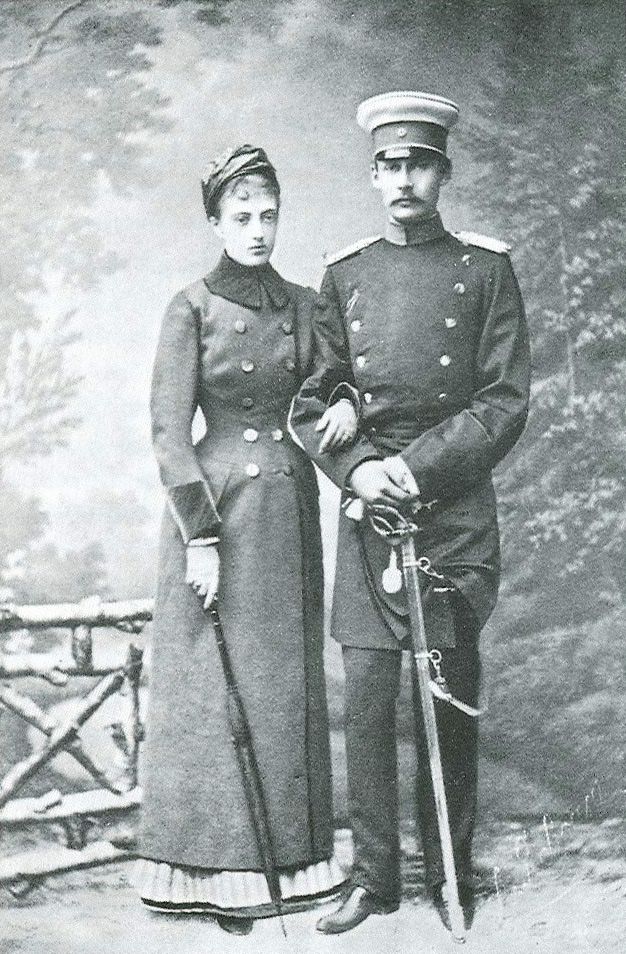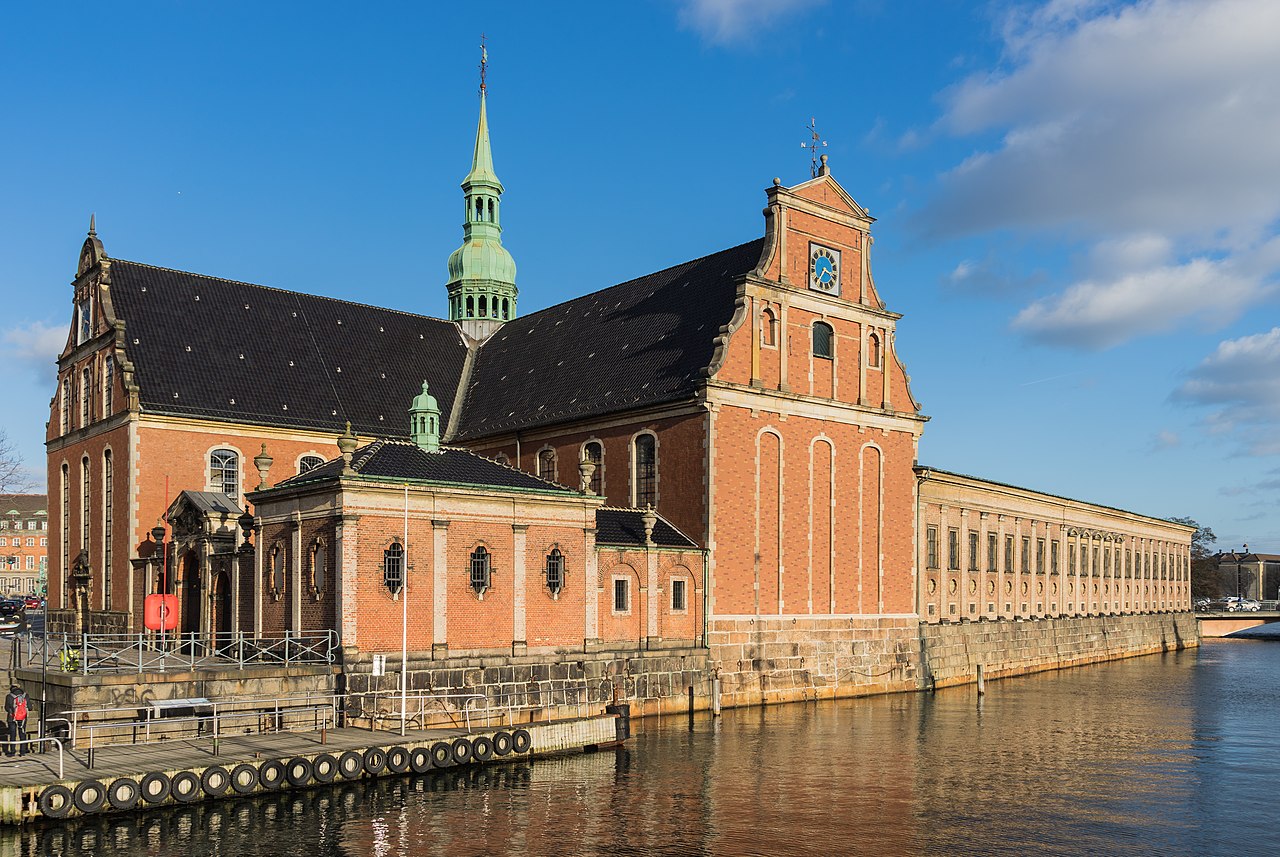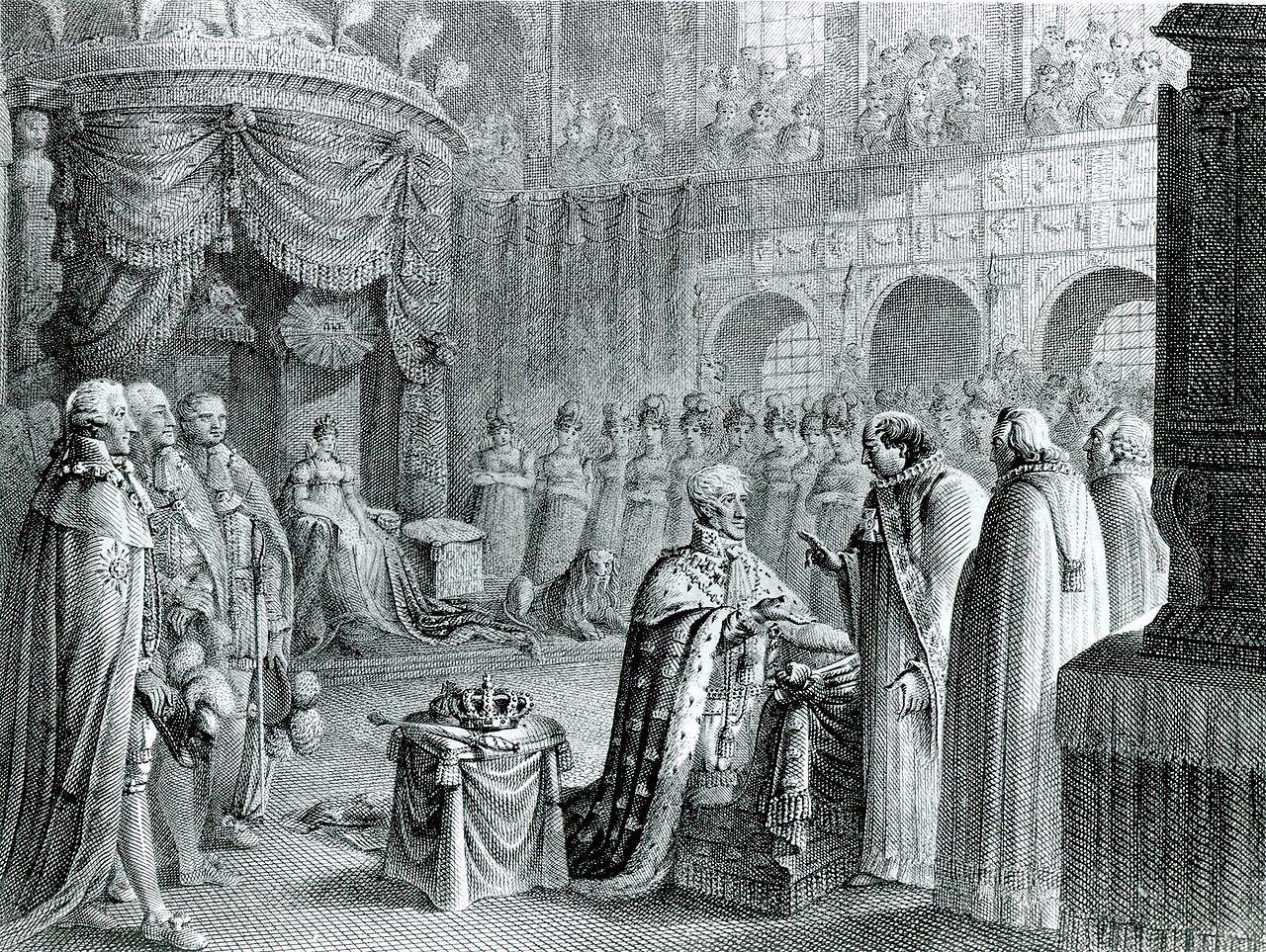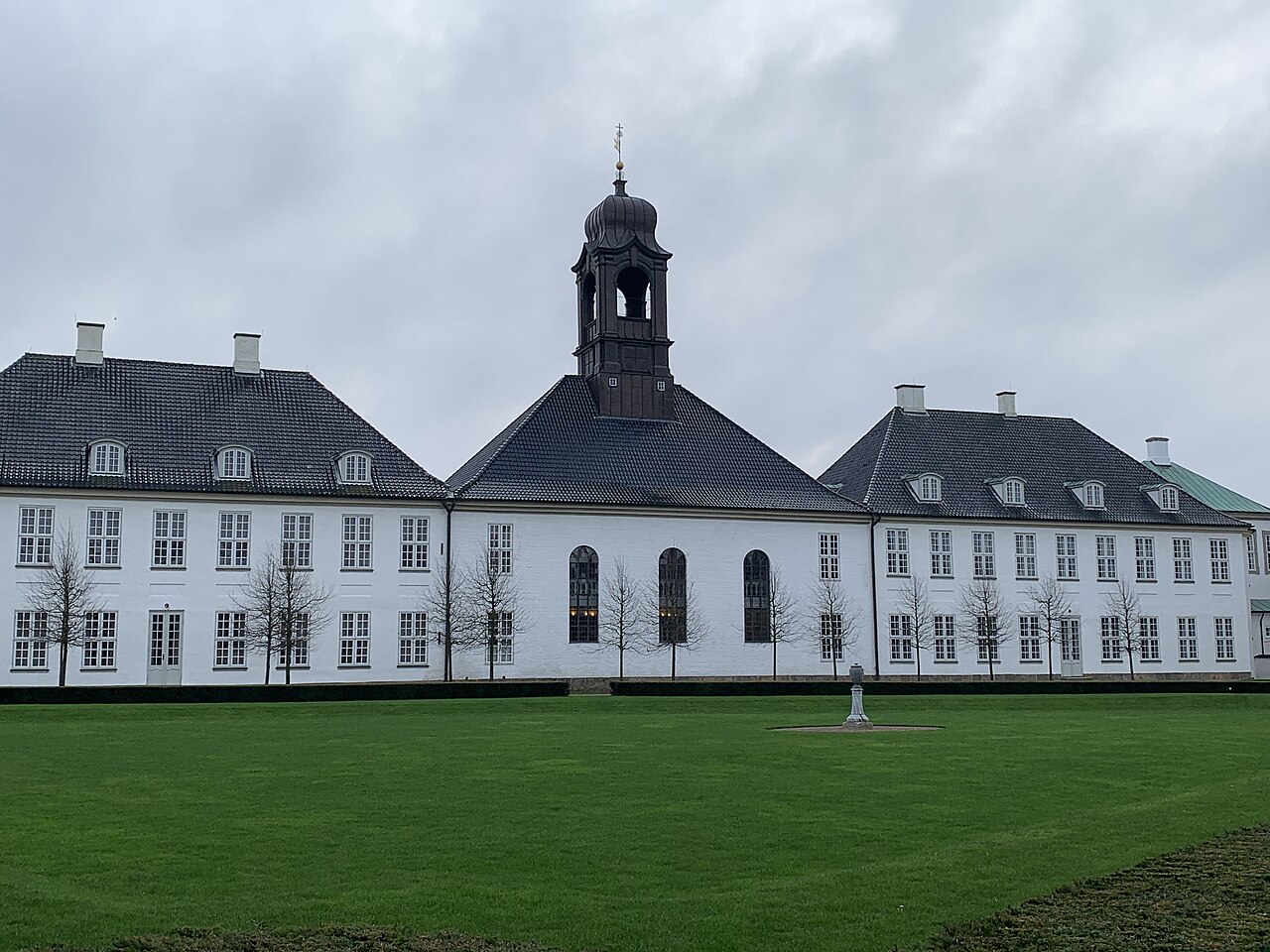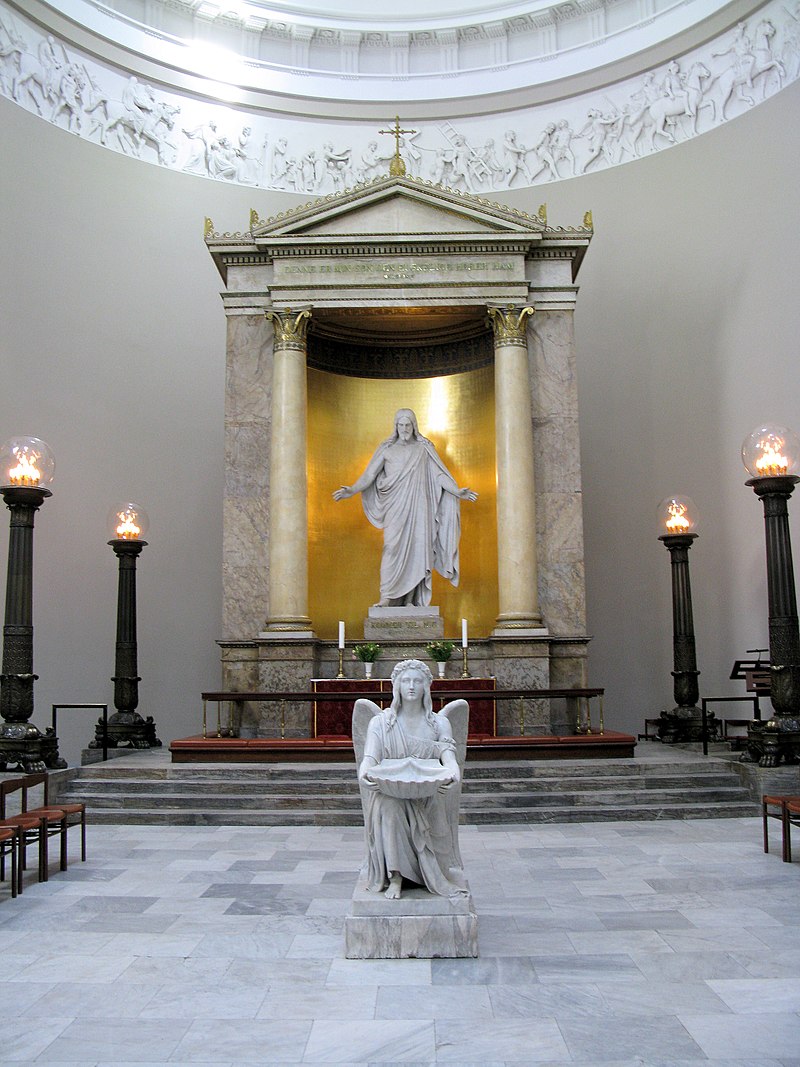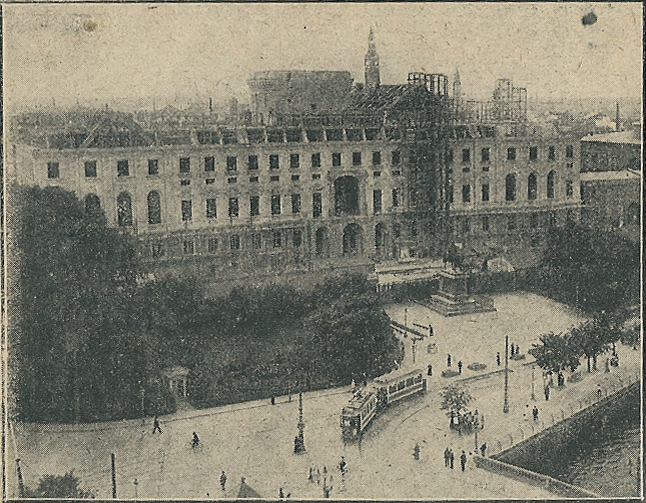by Susan Flantzer
© Unofficial Royalty 2021
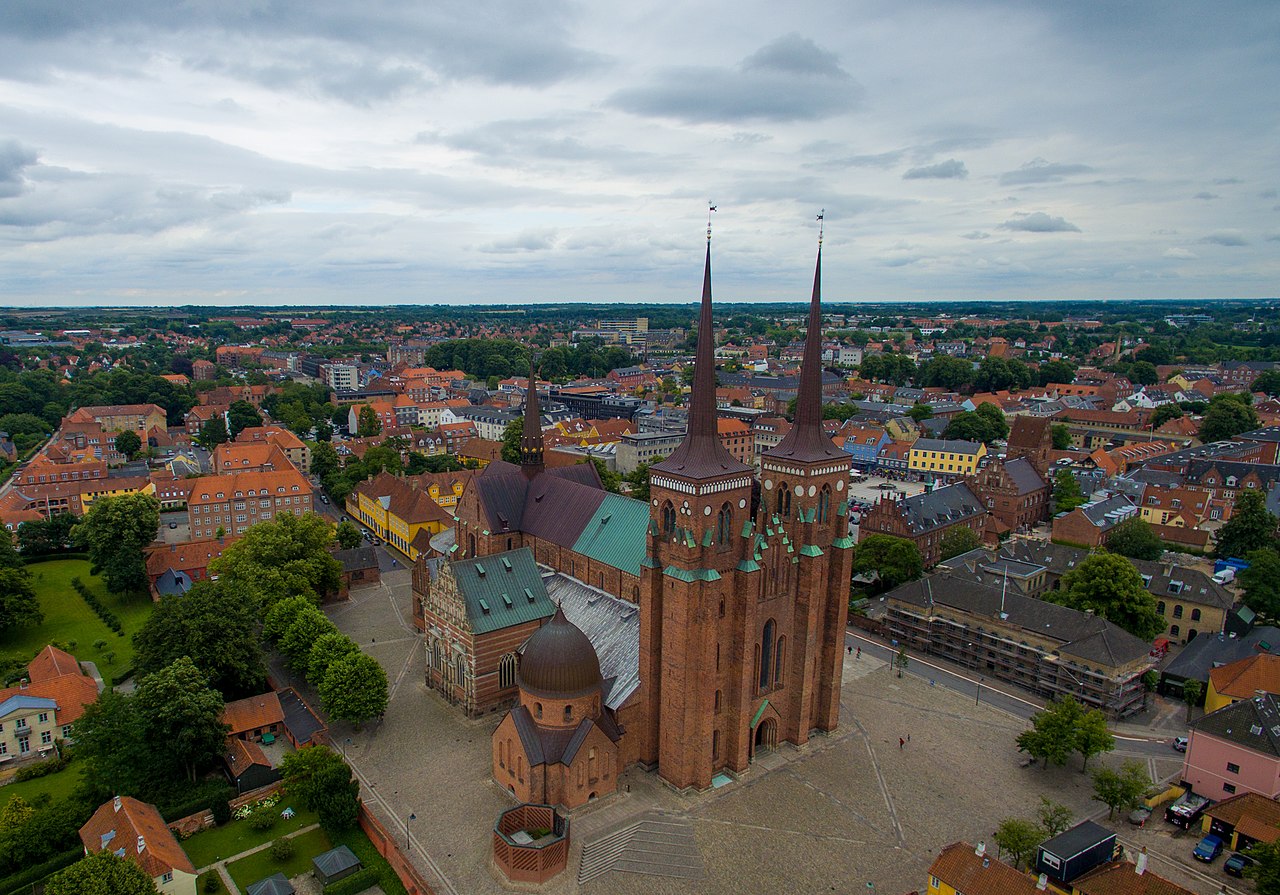
Af CucombreLibre from New York, NY, USA – Roskilde Cathedral, Denmark, CC BY 2.0, https://commons.wikimedia.org/w/index.php?curid=53832603
Roskilde Cathedral in Roskilde, Denmark, which this writer has visited, located 19miles/30 km west of Copenhagen on the island of Zealand, is a church of the Evangelical Lutheran Church of Denmark, sometimes called The Church of Denmark, the established, state-supported church in Denmark. It has been the main site for Danish royal burials since the 15th century and most monarchs and their consorts from the House of Oldenburg (1448 – 1863) and the House of Schleswig-Holstein-Sonderburg-Glücksburg (1863 – present) are buried there. The cathedral was also used for non-royal burials and the floor is covered with hundreds of grave markers with additional graves in the crypts.

Grave markers; Photo Credit © Susan Flantzer
King Harald Bluetooth named Roskilde the capital of Denmark in 960 and a small wooden church dedicated to the Holy Trinity was built on the location of the current cathedral. The first stone cathedral, in the Romanesque style, was completed in 1080 and a monastery was completed soon afterward.

Main Aisle of Roskilde Cathedral; Photo Credit © Susan Flantzer
In 1200, an expansion of the cathedral began and was completed in 1280, resulting in the Brick Gothic cathedral we see today The magnificent red brick building consists of about 2.5 million bricks and is twice as high as the old cathedral. A fire in 1443 damaged the cathedral, requiring renovations. During the Protestant Reformation, in 1538, Roskilde Cathedral ceased being a place of Catholic worship and became a house of Protestant worship.
Royal Burials

Roskilde Cathedral; Photo Credit © Susan Flantzer
To accommodate the many royal burials, chapels were added to the 13th century Brick Gothic cathedral, each built in the architectural style of its time. There are also burials of other members of the Danish royal family in the crypts. The years below are birth and death years.
Holy Trinity Church
Harald Bluetooth, who introduced Christianity to Denmark, was buried at the Holy Trinity Church, the wooden first church on the site. His son Sweyn Forkbeard was first buried in England and his remains were later moved to Denmark where they were interred near his father at the Holy Trinity Church. However, their tombs have never been found.
Pier in the Apse
Sweyn II Ertridsen was interred in the southeastern pier. A pier is similar to a column and is designed to support arches. In the photo below, a portrait of Sweyn II Ertridsen on the right marks the pier where he is buried.

Burial site of Sweyn II Estridsen; Credit By Richard Mortel from Riyadh, Saudi Arabia – Funerary monuments, Roskilde Cathedral (2), CC BY 2.0, https://commons.wikimedia.org/w/index.php?curid=69758143

Close-up of the portrait of Sweyn II Estridsen that marks his place of burial; Credit – Wikipedia
Choir
Queen Margrethe I was interred in a sarcophagus behind the high altar. Her beautiful sarcophagus was made by German sculptor Johannes Junge (link in German) in 1423. She had left property to the Roskilde Cathedral on the condition that Masses for her soul would be said regularly in the future. This was discontinued in 1536 during the Protestant Reformation although a special bell is still rung twice daily in memory of Queen Margrethe I.

Tomb of Margrethe I; Photo Credit © Susan Flantzer
********************
Tombs in the Apse
The apse is the end of a cathedral opposite the main entrance. It is often circular as it is at Roskilde Cathedral. The sarcophagi here are all grand white marble structures except for King Christopher III’s who lived more than two hundred years earlier and has a tomb with an effigy.

Tombs in the apse; Photo Credit © Susan Flantzer
********************
Trolle Chapel
Anna Sophie was hated by Frederik IV’s children from his first marriage to Louise of Mecklenburg-Güstrow. Upon Frederik IV’s death, his son and successor King Christian VI banished Anne Sophie from the court and kept her under house arrest at Clausholm Castle, her family home. When Anna Sophie died, King Christian VI allowed her to be buried at Roskilde Cathedral, but in the Trolle Chapel, originally built for members of the Trolle noble family, which is on the opposite side of the cathedral, far away from his parents’ tombs. The two smaller tombs are the tombs of two of six children (who all died in infancy) of Frederik IV and Anna Sophie.

Tomb of Anna Sophie Reventlow – Photo courtesy Findagrave.com
********************
Chapel of the Magi (Christian I’s Chapel)
King Christian I, the first monarch of the House of Oldenburg, built the Chapel of the Magi as a family burial chapel for the House of Oldenburg. While the elaborate tombs of King Christian III, King Frederik II, and their consorts are in the Chapel of the Magi, the graves of King Christian I and Queen Dorothea are marked with simple stones because the chapel itself was to be considered their memorial monument.

Graves of King Christian I and Queen Dorothea; Photo Credit © Susan Flantzer

Tomb of Christian III and Dorothea of Saxe-Lauenburg; Photo Credit © Susan Flantzer

Tomb of Frederik II and Sophie of Mecklenburg-Güstrow; Photo Credit © Susan Flantzer
********************
Christian IV’s Chapel
In 1613, a year after the death of his first wife Anna Katharina, Christian IV ordered the construction of a new burial chapel because the space inside Roskilde Cathedral for burials was very limited. Two older chapels were demolished to make space for the new burial chapel. The exterior of the new chapel was completed by 1641. However, when Christian IV died in 1648, the interior had not been completed and his coffin was placed in the crypt below. The interior of the chapel was not completed until 1866. Two large paintings illustrating important scenes from Christian IV’s life are on the walls and a statue of Christian IV watches over the chapel. King Christian IV’s silver-plated casket now stands in the middle of the chapel. His casket is surrounded by the caskets of his first wife Anna Katharina of Brandenburg, his eldest son and heir apparent Christian who predeceased him, his second son who succeeded him as King Frederik III, and Frederik III’s wife Sophie Amalie of Brunswick-Lüneberg.

Christian IV Chapel: Caskets front row left to right: Anna Katharina, Christian IV, Christian, Prince-Elect; back row left to right: Sophie Amalie of Brunswick-Lüneberg, Frederik III; Photo Credit © Susan Flantzer
********************
Frederik V’s Chapel
- Christian VI, King of Denmark and Norway (1699 – 1746)
- Sophia Magdalena of Brandenburg-Kulmbach, wife of Christian VI (1700 – 1770)
- Frederik V, King of Denmark and Norway (1723 – 1766)
- Louisa of Great Britain, first wife of Frederik V (1724 – 1751)
- Juliana Maria of Brunswick-Wolfenbüttel, second wife of Frederik V (1729 – 1796)
- Christian VII, King of Denmark and Norway (1749 – 1808)
- Frederik VI, King of Denmark and Norway (1768 – 1839)
- Marie of Hesse-Kassel, wife of Frederik VI (1767 – 1852)
- Christian VIII, King of Denmark (1786 – 1848)
- Caroline Amalie of Schleswig-Holstein, second wife of Christia VIII (1796 – 1881)
- Frederik VII, King of Denmark (1808 – 1863)
Frederik V’s Chapel consists of two chapels in the neoclassical style, constructed 1774–1825 and required the removal of a previous existing chapel. One chapel has two adjoining rooms and is referred to as Christian VI’s Chapel. The other, Frederik’s V Chapel, is a domed chapel in the shape of a cross. The interiors have the classic white-washed wall. The chapels show a gradual trend in moving from grand marble sarcophagi to more simple velvet-covered coffins, and in the case of Frederik VII, a wooden coffin. An example of a marble sarcophagus and examples of velvet-covered coffins can be seen in the photo below.

Frederik V’s Chapel; Photo Credit © Susan Flantzer
********************
Christian IX’s Chapel
The tombs of the first three kings and queen consorts of the House of Schleswig-Holstein-Sonderburg-Glücksburg are in the rather small Christian IX’s Chapel also known as the Glücksburg Chapel. When Christian IX died, a competition was held for a design of a double sarcophagus for him and his wife Queen Louise who had predeceased him. The winning design was later determined to be too controversial. Instead, the sarcophagus was designed by Edvard Eriksen, who created the famous Little Mermaid statue in the Copenhagen harbor, and architect Hack Kampmann. They created a large sarcophagus in white marble surrounded by three graceful sculptures depicting Remembrance, Love, and Sorrow.

Tombs of King Christian X and Queen Alexandrine; Photo Credit – © Susan Flantzer

Tombs of King Frederik VIII and Queen Louise; Photo Credit – © Susan Flantzer

Tombs of King Christian X and Queen Alexandrine; Photo Credit – © Susan Flantzer
********************
Maria Feodorovna’s Temporary Burial Site
Empress Maria Feodorovna of Russian, the wife of Alexander III, Emperor of All Russia and mother of Nicholas II, Emperor of All Russia, was born Princess Dagmar of Denmark, the daughter of Christian IX, King of Denmark. After escaping from Russia after the Russian Revolution, she lived the rest of her life in Denmark. Upon her death in 1928, she was buried at Roskilde Cathedral. She had wished that at some point in time she could be buried with her husband. In 2005, Queen Margrethe II of Denmark and Russian President Vladimir Putin agreed, along with their governments, that her wish should be fulfilled. Her remains were transported to St. Petersburg and interred next to her husband in the Peter and Paul Cathedral on September 28, 2006.

First burial place of Empress Maria Feodorovna in Roskilde Cathedral; Credit – Wikipedia
********************
Frederik IX’s Burial Site
King Frederik IX had a career in the Royal Danish Navy where he had several senior commands and attained the rank of Rear Admiral. Unlike other Danish monarchs who had been buried inside Roskilde Cathedral, Frederik wanted to be buried outside the cathedral in sight of the sea. The two photos below of the burial site right outside of Roskilde Catherdral were taken by this author who can verify that the Roskilde Fjord can be seen from the site of the grave.

Site of King Frederik IX’s grave outside Roskilde Cathedral; Photo Credit © Susan Flantzer

Grave of King Frederik IX and his wife Queen Ingrid; Photo Credit © Susan Flantzer
********************
St. Brigid’s Chapel – Margrethe II’s Future Burial Site
In 2010, it was announced that Queen Margrethe II had chosen St. Brigid’s Chapel at Roskilde Cathedral as the burial site for herself and her husband Prince Henrik. St. Bridgid’s Chapel, built in 1485, is one of the two remaining old chapels. However, the Danish Royal Court announced on August 3, 2017, that Prince Henrik did not want to be buried in Roskilde Cathedral. Following his funeral in 2018, Prince Henrik’s remains were cremated with half of his ashes spread over Danish waters, and the other half interred in the private garden at Fredensborg Castle.
Danish artist Bjørn Nørgaard designed the sarcophagus. The photos below are from this author’s visit to Roskilde Cathedral in August 2011 where she was able to see a conservator restoring the 500-year-old murals on the chapel’s walls and a display about Queen Margrethe II’s tomb. Since this author’s visit, the sarcophagus has been finished and installed but is covered until the death of Queen Margrethe II.

St. Brigid’s Chapel at Roskilde Cathedral; Photo Credit © Susan Flantzer

A poster describing the sarcophagus of Queen Margrethe II; Photo Credit © Susan Flantzer

Model of the sarcophagus of Queen Margrethe II; Photo Credit © Susan Flantzer

Conservator restoring the 500-year-old murals on the chapel’s walls; Photo Credit © Susan Flantzer

Detail of the mural; Photo Credit © Susan Flantzer
********************
Other Royal Burials

One of the crypts at Roskilde Cathedral; Photo Credit © Susan Flantzer
The following are also buried in Roskilde Cathedral, mostly in the crypts.
- Prince Christopher of Denmark, Duke of Lolland, son of Valdemar IV (1341 – 1363)
- Prince Magnus of Denmark, Duke of Holstein, son of Christian III (1540 – 1583)
- Prince Ulrik of Denmark, son of Frederik II (1578 – 1624)
- Prince Hans of Denmark, son of Frederik II (1583 – 1602)
- Prince Ulrik of Denmark, son of Christian IV (1611 – 1633)
- Princess Magdalena Sibylle of Saxony, wife of Christian, Prince Elect of Denmark, Crown Prince of Norway, son of Christian IV (1617 – 1668)
- Prince Christian of Denmark, son of Christian V (1675 – 1695)
- Princess Sophie Hedwig of Denmark, daughter of Christian V (1677 – 1735)
- Prince Vilhelm of Denmark, son of Christian V (1687 – 1705)
- Prince Carl of Denmark, son of Christian V (1680 – 1729)
- Princess Charlotte Amalie of Denmark, daughter of Frederik IV (1706 – 1782)
- Frederik, Hereditary Prince of Denmark and Norway, son of Frederik V (1753 – 1805)
- Sophie Friederike of Mecklenburg, wife of Frederik, Hereditary Prince of Denmark, son of Frederik V 1758 – 1794
- Princess Juliane of Denmark, daughter of Frederik, Hereditary Prince of Denmark and Norway (1788 – 1850)
- Princess Louise Charlotte of Denmark, daughter of Frederik, Hereditary Prince of Denmark and Norway (1789 – 1864)
- Ferdinand, Hereditary Prince of Denmark, son of Frederik, Hereditary Prince of Denmark (1792 – 1863)
- Princess Caroline of Denmark, daughter of Frederick VI (1793 – 1881)
- Prince Wilhelm of Schleswig-Holstein-Sonderburg-Glücksburg (1816 – 1893), brother of Christian IX
- Prince Johann von Schleswig-Holstein-Sonderburg-Glücksburg, brother of Christian IX (1825 – 1911)
- Prince Valdemar of Denmark, son of Christian IX (1858 – 1939)
- Princess Marie of Orléans, wife of Prince Valdemar (1865 – 1909)
- Prince Harald of Denmark, son of Frederik VIII (1876 – 1949)
- Princess Thyra of Denmark, daughter of Frederik VIII (1880 – 1945)
- Prince Gustav of Denmark, son of Frederik VIII (1887 – 1944)
- Prince Erik, Count of Rosenborg, son of Prince Valdemar, grandson of Christian IX (1890–1950)
- Prince Viggo, Count of Rosenborg, son of Prince Valdemar, grandson of Christian IX (1893 – 1970)
- Eleanor Margaret Green, Princess Viggo, Countess of Rosenborg, wife of Prince Viggo (1895 – 1966)
- Princess Margaret of Denmark, daughter of Prince Valdemar, granddaughter of Christian IX (1895 – 1992)
- Hereditary Prince Knud of Denmark, son of Christian X (1900 – 1976)
- Princess Caroline-Mathilde of Denmark, daughter of Prince Harald, granddaughter of Frederik VIII, wife of Knud, Hereditary Prince of Denmark (1912 – 1995)
- Prince Gorm of Denmark, son of Prince Harald of Denmark, grandson of Frederik VIII) (1919 – 1991)
- Count Christian of Rosenborg, son of Prince Erik, Count of Rosenborg, grandson of Prince Valdemar (1932 – 1997)
This article is the intellectual property of Unofficial Royalty and is NOT TO BE COPIED, EDITED, OR POSTED IN ANY FORM ON ANOTHER WEBSITE under any circumstances. It is permissible to use a link that directs to Unofficial Royalty.
Works Cited
- Da.wikipedia.org. 2021. Roskilde Domkirke – Wikipedia, den frie encyklopædi. [online] Available at: <https://da.wikipedia.org/wiki/Roskilde_Domkirke> [Accessed 4 September 2021].
- De.wikipedia.org. 2021. Dom zu Roskilde – Wikipedia. [online] Available at: <https://de.wikipedia.org/wiki/Dom_zu_Roskilde> [Accessed 4 September 2021].
- En.wikipedia.org. 2021. Roskilde Cathedral – Wikipedia. [online] Available at: <https://en.wikipedia.org/wiki/Roskilde_Cathedral> [Accessed 4 September 2021].
- Flantzer, Susan, 2012. Danish Royal Burial Sites: House of Oldenburg, 1448 – 1863. [online] Unofficial Royalty. Available at: <https://www.unofficialroyalty.com/royal-burial-sites/danish-royal-burial-sites/house-of-oldenburg-1448-1863/> [Accessed 4 September 2021].
- Flantzer, Susan, 2012. Danish Royal Burial Sites: House of Schleswig-Holstein-Sonderburg-Glücksburg, 1863 – present. [online] Unofficial Royalty. Available at: <https://www.unofficialroyalty.com/royal-burial-sites/danish-royal-burial-sites/house-of-schleswig-holstein-sonderburg-glucksburg-1863-present/> [Accessed 4 September 2021].
- Roskildedomkirke.dk. 2021. Visit Roskilde Cathedral | Roskilde Domkirke. [online] Available at: <https://roskildedomkirke.dk/english> [Accessed 4 September 2021].




